If you’re new to water sports, you may wonder, what’s the difference between a kayak and a canoe?
This is a fair question, especially since these terms are used interchangeably. It’s easy to see why this is one of the most-searched questions on Google concerning watercraft.
But we’re here to dispel any confusion, so you can find the right boat to get out paddling with this summer.
We’ve listed the five main differences between kayaks vs canoes and given a quick overview of the pros and cons of each activity. Let’s dive right in…
The five differences between a kayak and a canoe
1. Classification
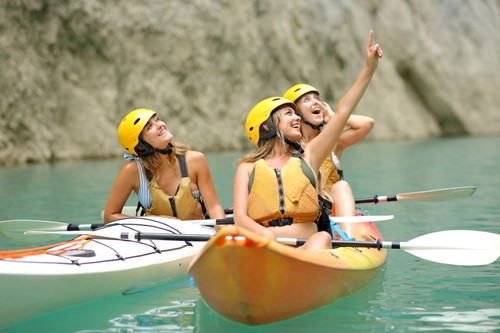
One way to tell whether a small vessel is a kayak vs a canoe is its classification.
When a kayak or canoe is manufactured, it’s given at least one letter and one number as a point of classification.
The letter will be either ‘C’ for canoe or ‘K’ for kayak.
The number will reflect the purpose of the vessel through how many people it can hold. For example, ‘K1’ would be a solo kayak, whereas ‘C2’ would be a tandem canoe, and so on.
Confusion can creep in when other letters are added to the mix, and classifications look like ‘OC1’, for example. This reflects an extra defining feature; in this case, it means ‘Open Canoe 1’, a regular solo canoe.
Because there are some canoes with a closed top designed for tougher conditions, they then take on the classification of ‘C1’ to show they’re not a regular open-top canoe. But you’ll usually only come across this if you’re entering competitions.
Related: The 5 best drysuits for kayaking
2. Purpose
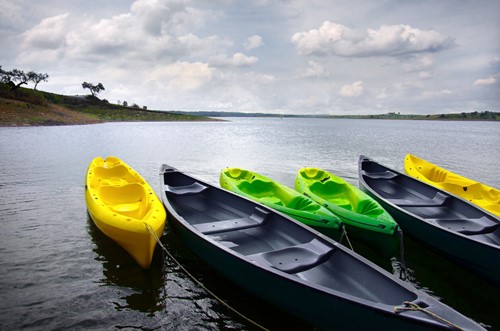
While they’re similar in appearance, kayaks and canoes wouldn’t exist together in recreational boating if they didn’t have separate purposes, just like how SUVs and sports cars are both classed as cars.
Think of canoes as SUVs. Their purpose is mainly to transport a family or group of friends and provide a well-controlled and adaptable driving experience.
Kayaks, on the other hand, are more like sports cars. Their purpose is to travel fast with fewer people, and they’re more suited to racing or competitive environments.
If you’re considering purchasing one or the other, this should give you a clearer idea of which suits you best.
3. Design

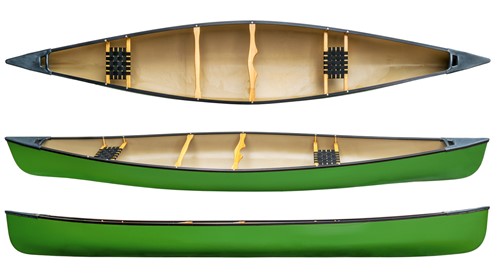
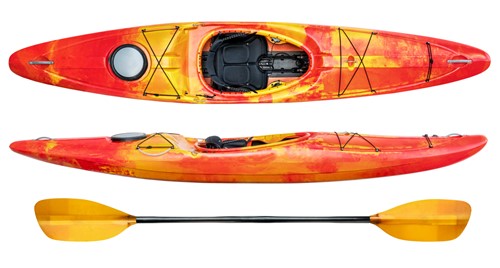
Its design is the most tell-tale sign of whether a boat is considered a kayak or canoe. Since a boat is designed with its purpose in mind, this links to our previous point.
Canoes, also known as the SUVs of recreational boating, have a completely open deck. There is more space on board for movement and storing everything you need for a day out with your family or friends.
On the contrary, you won’t fit your picnic aboard a kayak. They usually have a closed deck that leaves the seating area open but fills the top and inside of the boat. There’s usually a cockpit for one person only, but some seat up to four.
Related: 7 items you need to have on your kayak
4. Seating position
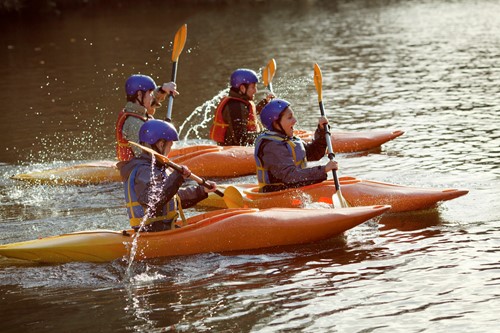
Another easy-to-spot difference between kayaks and canoes is how the paddler is seated.
Canoes typically have a bench-like seat for the paddler to base themselves on, and their body is fully visible in this position.
However, they sometimes choose to kneel, which involves moving closer to the front of the boat and wedging their knees against the sides for extra stability.
In a kayak, the paddler will sit within the cockpit so that only their upper body is visible. The closed deck obscures their legs, and built-in thigh braces will support their knees.
5. Paddles
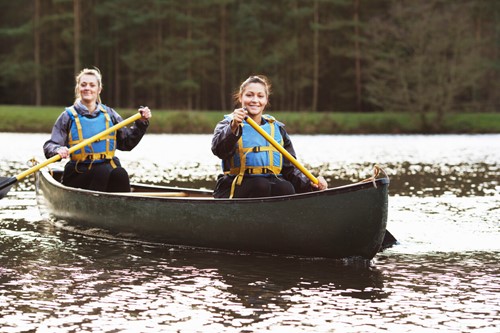
The type of paddle used to propel a boat through water indicates whether it’s a kayak or a canoe.
Single-blade paddles are commonly used with canoes since they allow the paddler to adopt a ‘J stroke’ on one side of the boat.
This propels the boat forwards in a straight line whilst allowing the paddler to reserve energy, as using a double-bladed paddle whilst sitting so high above the water line would be taxing.
Kayakers benefit from using a double-bladed paddle as they’re sat in line with the water and typically want to prioritise speed.
Being able to consistently paddle on both sides allows them to build a quicker pace, and although zigzagging in the water is more likely, it’s easily fixed through practice.
Related: Sea kayaking for beginners
Kayaking vs canoeing: the pros and cons of each
Now that we’ve covered the differences between a kayak and a canoe let’s compare each activity to explore which suits you best.
After all, buying a small watercraft isn’t a small investment, and getting things right the first time is better.
Kayaking
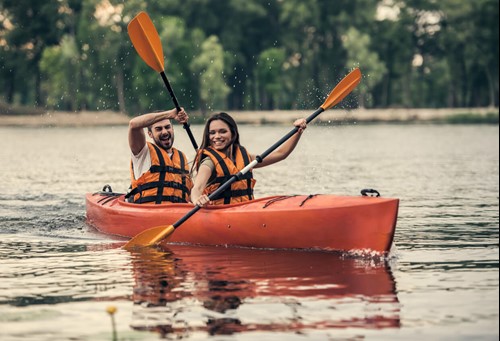
Pros:
- the basic paddling technique is easy to pick up
- you’ll cover greater distances faster thanks to its design
- it requires less physical exhaustion to pick up speed
- you can make it into a challenging activity that offers variety
- it’s easy to manoeuvre a kayak, and they’re better at handling whitewater
- kayaks are easily transported
Cons:
- double paddles are heavier than single paddles
- more advanced techniques require a lot of practice
- kayaking in fast-moving waters can be intimidating
Canoeing
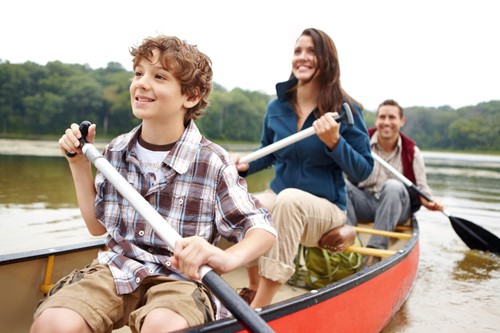
Pros:
- it’s more difficult to capsize compared to kayaking
- getting in and out of the boat is a breeze
- you can alter your seating position throughout the day and feel more comfortable overall
- canoes hold much more equipment and are perfect for long days out
- you get a fuller view of your surroundings
- after you’ve mastered the basic paddling technique, further skills are easier to pick up
Cons:
- the basic paddling technique can be difficult to pick up
- canoes are heavier, bulkier, and difficult to transport
- paddling takes greater effort than kayaking, and single paddles are less efficient
Overall, if you’re looking for a low-impact activity to enjoy solo or with a group of friends, canoeing is less about speed and more about leisure.
But if you’re more of a thrill seeker, kayaking offers more in the way of progression. It may be easier to pick up initially, but the more advanced techniques challenge those feeling a little more adventurous.
Specialist sport craft insurance with Insure4Boats
Whether you’re canoeing, kayaking or paddle boarding this summer, you may want to consider specialist sport craft insurance to protect your gear against theft, loss, or damage.
At Insure4Boats, we arrange new-for-old cover on items bought new that are up to three years old.
So, if you ever need to make a claim, you’ll be back out on the water in no time after we’ve repaired or replaced your equipment.
Third-party liability of up to £3m is included as standard with each policy. You’ll be protected against claims made if you damage third-party property or injure a person whilst out on the water.
Click here to learn more, or click the button below to get an instant online quote today.
Please note the information provided on this page should not be taken as advice and has been written as a matter of opinion. For more on insurance cover and policy wording, see our homepage.


